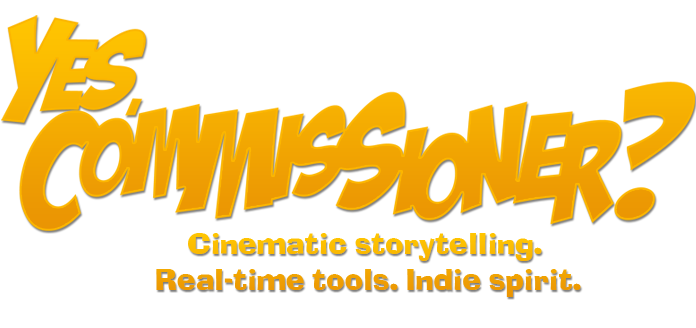In Unreal, the Sequencer is where the magic happens when it comes to cinematics, previs, filmmaking, linear narrative, etc.
On Monday June 8th, one week since writing the film and my 5th day using Unreal, I started putting my first shots together, and found the process to be extremely intuitive. An early mistake I made was dragging things I want out onto the level, and not into the Sequence Editor. When you drag an Actor onto the Level it forms part of that Level, not the Level Sequence. Dragging it to the Sequence Editor makes it an “instance” that only appears when the Level Sequence is open.
If you’ve used Maya, this works kind of like the Render Layers there. Each Layer has members, and when you’ve got that Layer open only the objects that are members of it appear.
It’s worth pointing out that what Unreal calls a “Level Sequence”, I would call a “shot”, in the way I work. Unreal allows you to nest level sequences to create an Edit, which I did in the demo below. However, since one of the points of creating the film proper is to remain true to the principles of film production previs, as discussed in a previous post, I wanted to generate individual movie files and edit them into sequences externally.
While on the subject of previs principles, it was very important to be strict about shot-names and version integrity! (Yes, I’m going to harp on about that again…)
Before changing this shot, I’ll right-click and Duplicate, which creates a v006. Then I open that one and make my changes there.
What that means is, if you’re looking at shot PBR_0900_v005 in the edit, when you go to your software (Maya, usually - but Unreal in our case) and open that scene and version, it should be exactly what you see in the edit. Because the Client might only ask for the character’s hat to be removed, or something equally trivial, but everything else stay the same. If you open the Maya file and something’s fundamentally changed or different, your simple task of hiding some geometry and re-outputting the shot just became much more difficult.
There’s an extra complication in Unreal because the “World” or level needs to be the same as the one burnt-in on the shot as well, as discussed in the previous post).
I derived shot numbers initially from the script. I numbered the scenes in the script, and I had 15 scenes in the first draft. So scene 09 in the script, for example, would start with shot 0900, and increment from there.
Doodling thumbnails on the script page, I concluded that the most shots I would plan at the outset to have in a single scene would be about 20, so I decided to number shots in increments of 5 - 0900, 0905, etc. This means that if I needed to insert a shot between those two, I could create a shot called 0902, for example. But really, the shot numbers aren’t important, and they don’t need to be in order - it’s only important that version integrity is adhered to.
(In fact, when I edited the film I jumbled up the scene order too, as it made more sense visually that way than it did on the page.)
So I created each shot initially as a v001, as seen on the image here. When I want to change a shot, I right-click on the shot and Duplicate, which will automatically version it up. I then make my changes in the new version. If I decide, while editing later, that I preferred a previous version, at the point when I need to make a change to the shot, it’s that version I duplicate next time.
I did a 34-min demo for some friends to show what I was upto, and I’ll put it here for you to see. It’s not meant to be a tutorial, I’m moving quite quickly and mumbling a lot. This is what I made in the 34 minutes:
And, the demo of me doing it:
Thanks for reading!

